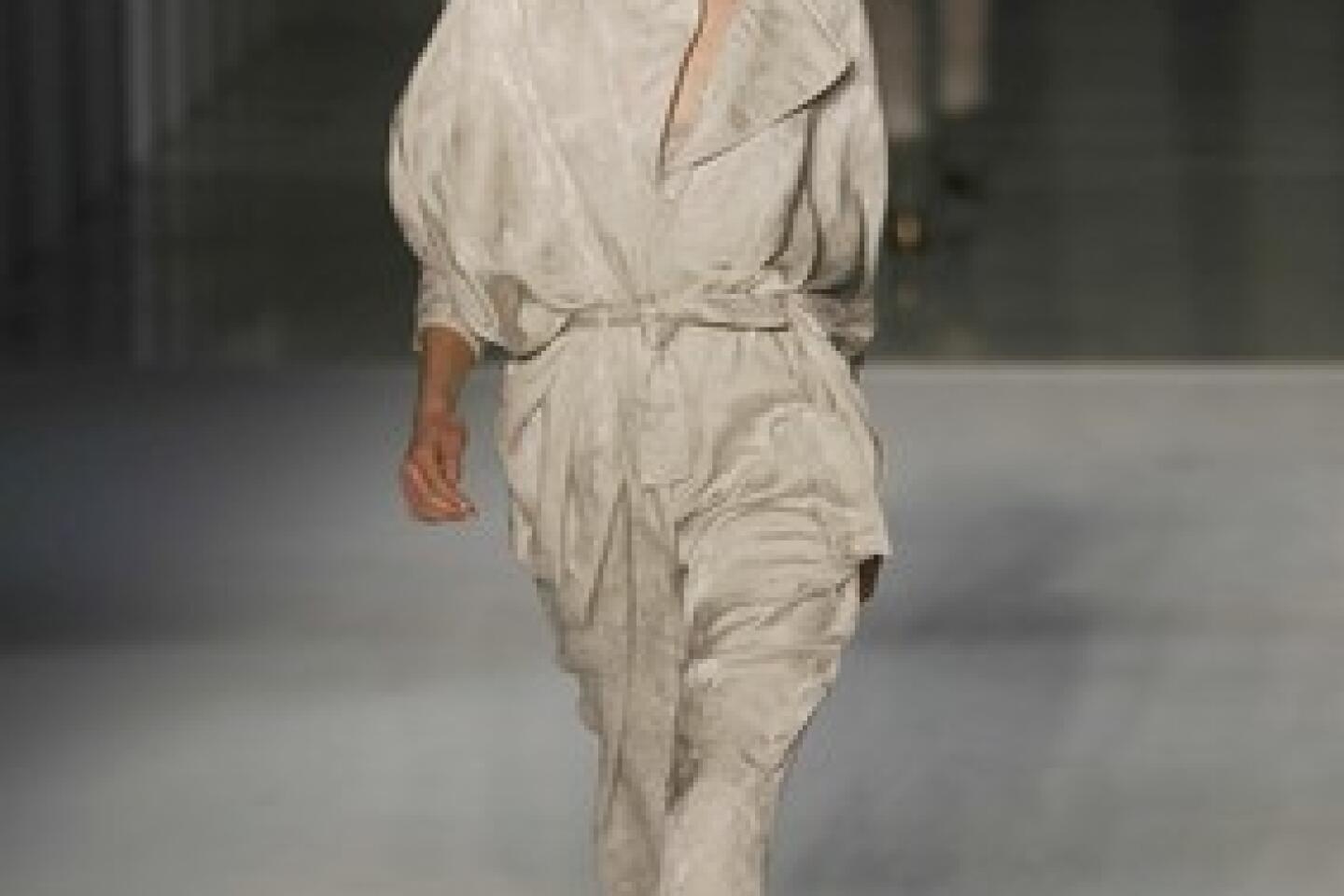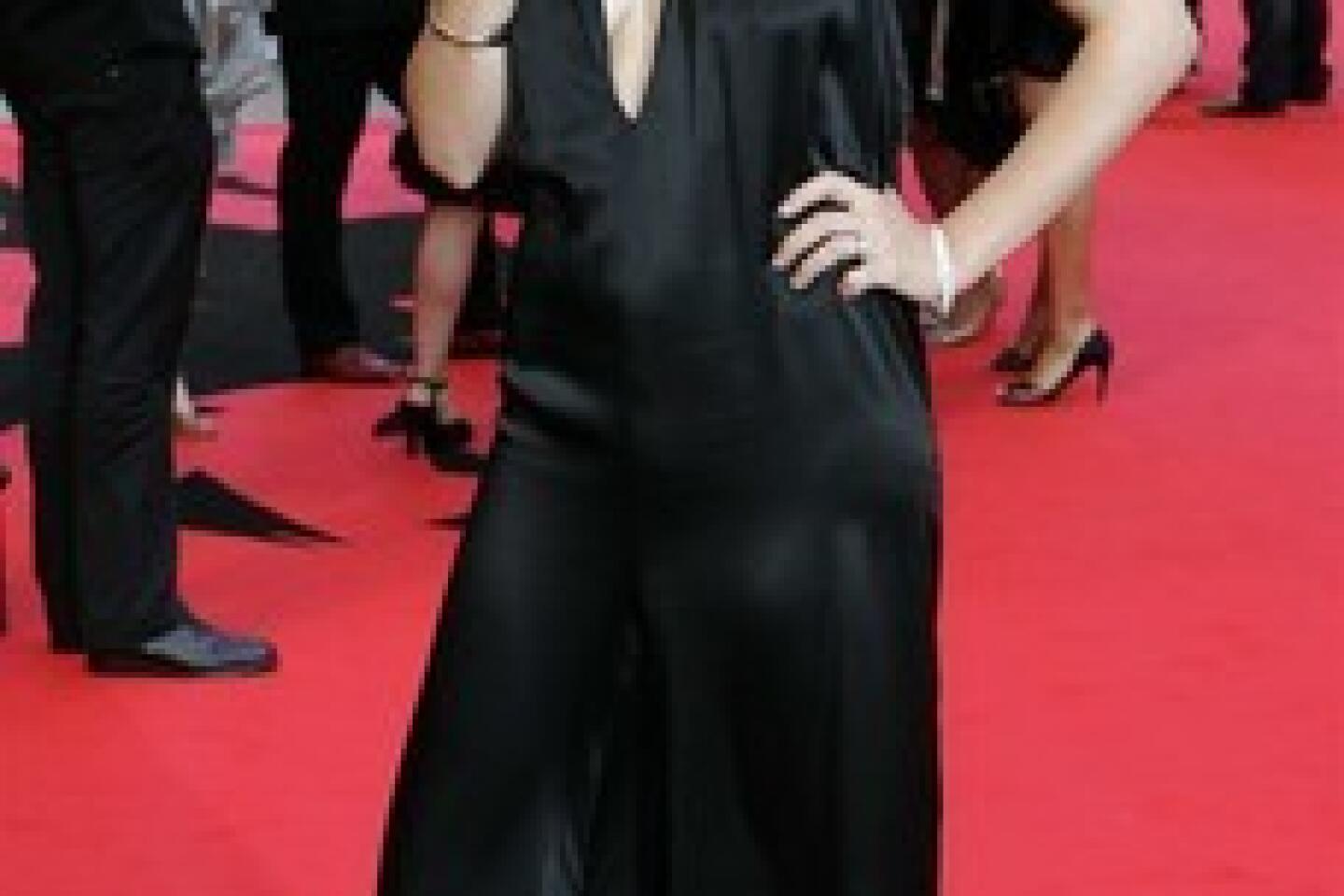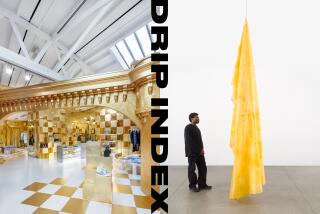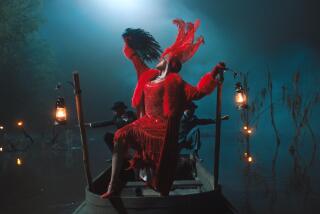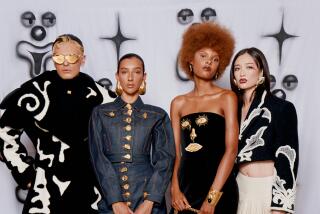The jumpsuit makes a comeback
IF YOU needed any more proof that jumpsuits are back, it came earlier this month when a peacock-embroidered one-piece owned by Elvis Presley fetched $300,000 at auction.
That anonymous bidder isn’t the only one taken with the style star of summer. At “The Dark Knight” premiere, Maggie Gyllenhaal donned a backless jumpsuit by Stella McCartney, along with the cherry red lips and soft finger waves of a 1940s screen siren. Selma Blair sported a tuxedo version by Marchesa for the L.A. premiere of “Hellboy II,” and Brooke Shields wore a Proenza Schouler sequined style at the Tony Awards. Rihanna, Gwyneth Paltrow and Angie Harmon have also worn grown-up versions of the onesie.
Like blue jeans, the jumpsuit has humble beginnings as work wear, but has been elevated to the realm of high fashion. Designers were onto the trend in February, when Benjamin Cho, Tomas Maier at Bottega Veneta and Preen were among those who showed jumpsuits on the runways.
All this, despite the fact that they are almost impossible to wear successfully: A jumpsuit must fit perfectly and define the waist. And take care with your footwear, or you risk looking like a mechanic. Yet, the jumpsuit offers the same all-in-one outfit appeal that has made the dress a retail hit for the last few seasons.
“It’s the most practical garment in the world,” says Dennita Sewell, fashion curator at the Phoenix Art Museum, where an exhibit about the history of jumpsuits will run from Sept. 1 to Feb. 1, 2009. “Many of man’s greatest moves were made in a jumpsuit.” Sewell cites Charles Lindbergh’s transatlantic flight and Neil Armstrong’s walk on the moon as defining moments in jumpsuit greatness. “Its impracticality comes when you have to answer the call of nature.”
The piece has been an American wardrobe staple since the start of the 20th century, when military pilots began strapping their parachute packs to them, and factory workers found them to be the ideal protection from grease and grime.
Katharine Hepburn wore a monogrammed silk one-piece in the 1937 film “Stage Door,” and five years later, Vera Maxwell, a pioneer of American sportswear, designed a version of the coverall that would be worn by millions of riveting Rosies during World War II. Even Elsa Schiaparelli made an easy-on, easy-off air-raid suit, complete with matching gas mask, velvet turban and flask.
“It was fashionable to look like you were part of the action,” says Kevin Jones, costume historian at the Fashion Institute of Design & Merchandising in L.A. Jones says the jumpsuits worn by women working in factories during World War II helped pave the way for pants as acceptable women’s attire.
The onesie hit the runway in the 1960s when André Courrèges showed his Space Age jumpsuits in Paris. Soon, Cher, Abba and Elvis adapted the look to their stage wardrobes, while Diana Ross, Liza Minnelli and Bianca Jagger disco danced at Studio 54 in Halston’s drapey, free-flowing one-piece styles.
As for the recent trend, who knows how long it will last? For fall, jumpsuits are moving away from Studio 54 glam and taking on a more utilitarian look. Marc Jacobs, Marchesa and Peter Jensen all showed styles resembling boiler suits.
Boiler suits? We’re guessing those won’t be showing up on a red carpet any time soon.
More to Read
From the Oscars to the Emmys.
Get the Envelope newsletter for exclusive awards season coverage, behind-the-scenes stories from the Envelope podcast and columnist Glenn Whipp’s must-read analysis.
You may occasionally receive promotional content from the Los Angeles Times.
